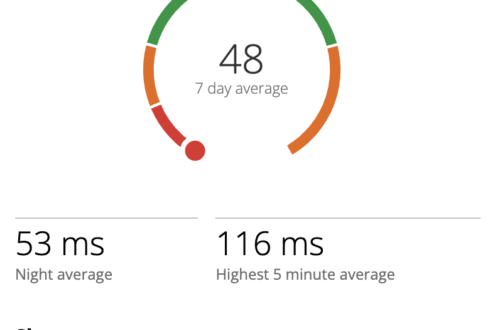Walking for Active Recovery: The Perfect Starting Point for Men Over 45
We all have days when it’s hard to find the motivation for intense training. My plan this week called for a tough running session on Thursday, focusing on speed and improving VO2 max – an intense workout meant to push my limits. However, a lingering infection left me feeling drained, with less energy and motivation than usual. In moments like these, an important question comes up: what should you do when your body isn’t ready for full-intensity workouts? My choice was walking for active recovery, which – though often underrated – is a valuable alternative, especially for men over 45.
“Sometimes victory is just showing up and taking a step forward.”
Table of Contents
Why Start with Walking for Active Recovery?
Walking for active recovery is the perfect starting point, especially after an illness, injury, or a long break from training. Most importantly, it’s low-impact, which means it’s gentle on your joints compared to running. It also gives you full control over the intensity, allowing for a smooth transition to more strenuous activities. You can adjust the incline, pace, and even choose different routes, making it easy to incorporate into a daily routine.
For men over 45, walking for active recovery isn’t just a way to “stay active”; it’s also a solid foundation for overall health and fitness. Walking supports metabolism, strengthens the heart, and studies show that regular walking can increase lifespan and improve the quality of life. It’s an activity anyone can adopt, regardless of current fitness level or motivation.
Training in Heart Rate Zones and the RPE Scale
I often talk about training in different heart rate zones, which helps tailor the intensity to your fitness level and how you feel that day. For those who don’t use heart rate monitors, the RPE Scale (Rate of Perceived Exertion) is an excellent tool. This subjective measure lets you gauge intensity without specialized devices.
- Heart Rate Zone 1: 50-60% of max heart rate – a gentle effort suitable for active recovery.
- RPE Scale: Aim for an RPE of 2-3, a mild exertion level where you can still hold a conversation comfortably.
Both approaches let you keep the workout light while promoting recovery and keeping the body moving, which is essential for maintaining progress. If you’re new to the concept of walking for active recovery, using these tools can help you stay in control and gradually build your stamina.
Sample Workout: Walking for Active Recovery
Walking in heart rate zone 1 is an ideal form of active recovery, allowing you to reset after more intense workouts or on days when you’re simply not up for a full session. My go-to recovery walk, for example, is a 3 km treadmill walk at a 6% incline. The distance and incline make it a mild workout, keeping the heart and muscles engaged without overloading them. Additionally, tracking HRV (Heart Rate Variability) can provide insights into how your body is responding to the workload.
Sample Recovery Walk Plan:
- Distance: 2-4 km
- Duration: 30-45 minutes
- Incline: 5-6% (or try a nature trail with gentle hills)
- RPE: 2-3 (light exertion)
This kind of walk doesn’t just support recovery; it also reinforces the habit of consistent activity. Even if you’re not feeling at your best, a simple walk can do wonders for your mood and overall fitness.
Research Insight: The Impact of Walking on Recovery and Endurance
According to a study published in the Journal of Sports Sciences (source), walking as a low-intensity exercise can significantly aid in active recovery by improving blood circulation and reducing muscle stiffness after more intense physical activities. The research highlights that even low-impact exercises, such as walking, help maintain aerobic conditioning and promote recovery by enhancing the delivery of oxygen and nutrients to muscles. This is particularly beneficial for older adults, as the body’s natural recovery processes slow down with age. By incorporating regular walking sessions, especially after high-intensity workouts, individuals can not only support muscle recovery but also build endurance over time.
For men over 45 looking to sustain long-term fitness, walking is a powerful tool that bridges the gap between maintaining activity and allowing the body to recover effectively. This study underscores that walking for active recovery is more than just an easy workout—it’s a strategic approach to optimize performance and longevity in training.
Walking for Blood Sugar Control and Metabolic Health
Research published on PubMed (source) highlights that even short bouts of low-intensity walking can have a positive impact on blood sugar levels, especially in middle-aged and older adults. According to the study, engaging in regular walking sessions after meals helps reduce postprandial glucose levels, which is critical for managing insulin sensitivity and metabolic health. For men over 45, controlling blood sugar is essential not only for preventing conditions like type 2 diabetes, but also for maintaining steady energy levels and supporting recovery. By incorporating walking for active recovery into a regular fitness routine, individuals can achieve better blood sugar control, which ultimately supports both physical performance and overall health.
This adds another layer to the benefits of walking—not only does it support recovery, but it also contributes to long-term metabolic health, making it a valuable tool for anyone looking to optimize their fitness as they age.
FAQ
In Summary
Walking for active recovery isn’t just a way to “stay active”; it’s a solid foundation for any fitness plan, especially after setbacks like illness or injury. Sometimes, the real strength lies in knowing when to say that a walk is enough for the day. It’s this kind of balance that helps sustain long-term fitness. So next time you’re feeling low on energy, take a step forward – and listen to what your body has to say.



